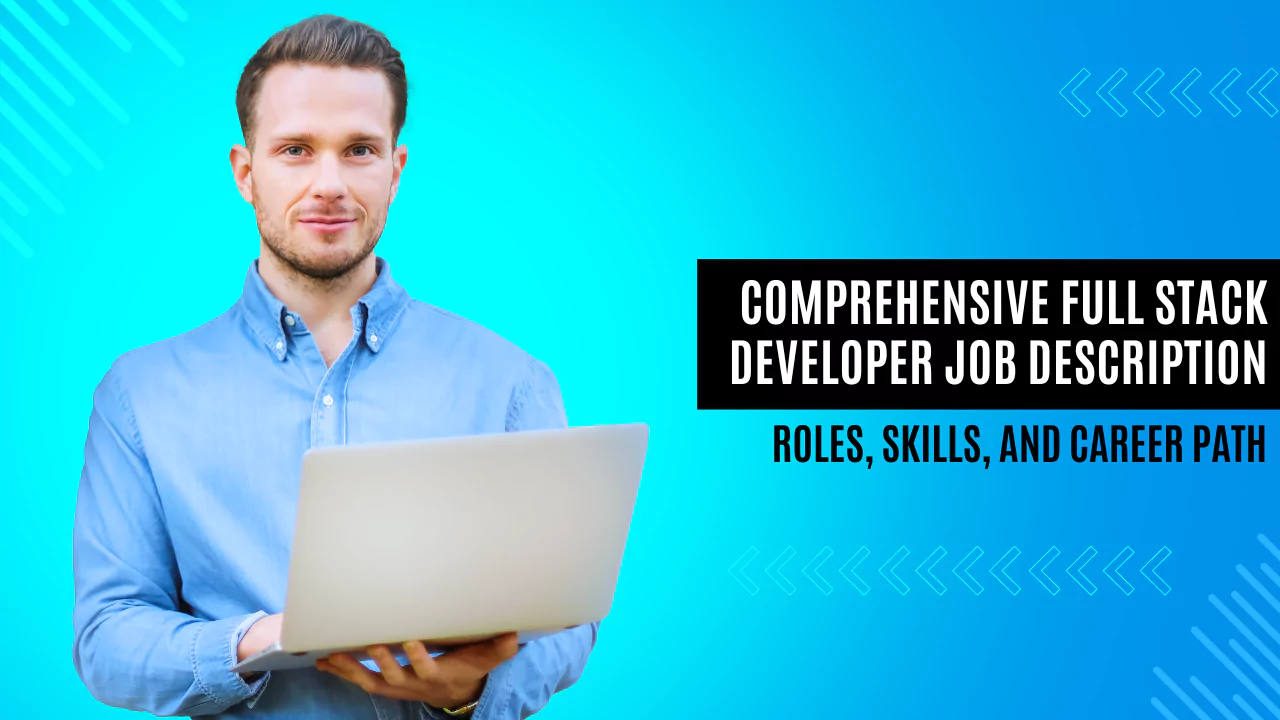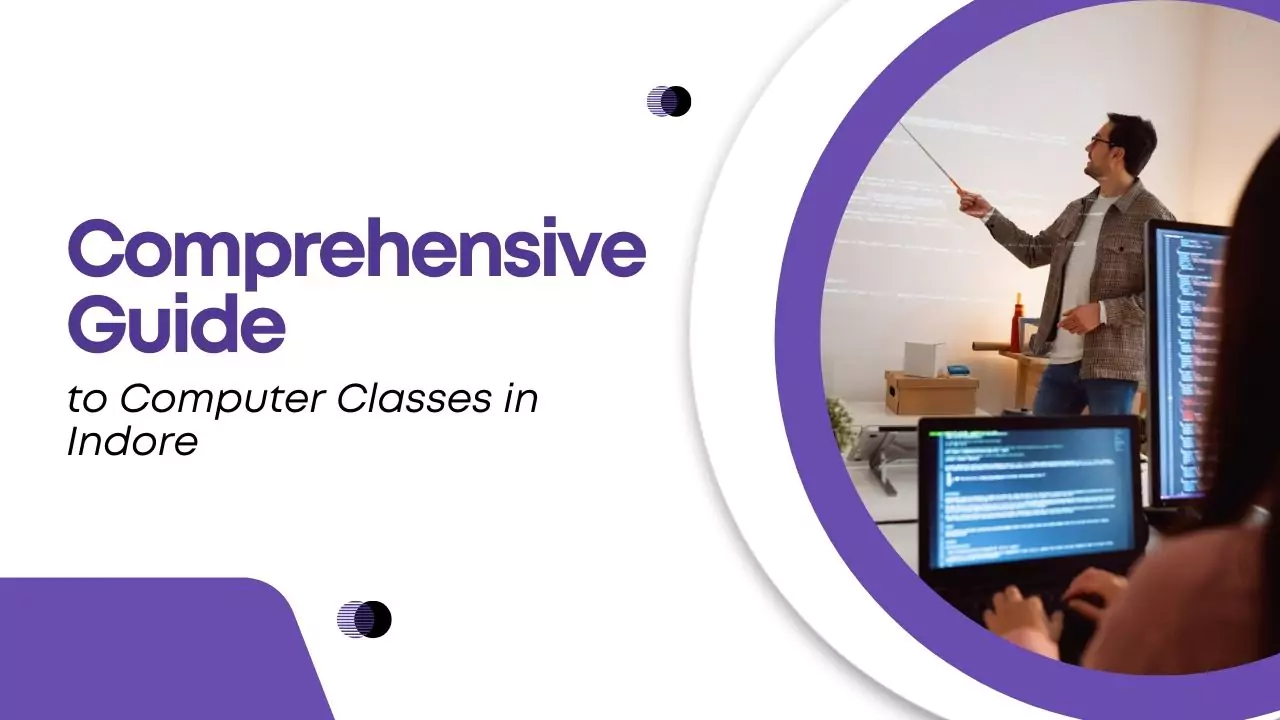In today’s fast-paced tech world, full stack developers have become essential assets for companies looking to build robust, scalable applications. If you’re aiming to break into this field or looking to hire a full stack developer, it’s crucial to understand the full stack developer job description in-depth. This blog covers the key responsibilities, skills, and career paths of a full stack developer.
What is a Full Stack Developer?
A full stack developer is a tech-savvy professional capable of working on both the front-end (client-side) and back-end (server-side) of web applications. They possess a unique blend of coding skills that allow them to develop fully functional platforms without needing additional applications to operate. Full stack developers bring together their expertise in front-end languages like HTML, CSS, and JavaScript with back-end languages such as Java, Python, and more.
Job Brief: Overview of a Full Stack Developer's Role
The full stack developer job is to build scalable software solutions. This involves handling both the front-end design to create engaging user interfaces and the back-end logic for database interactions, ensuring the platform runs seamlessly. A full stack developer is expected to be familiar with frameworks, third-party libraries, and Agile methodologies.

Core Responsibilities of a Full Stack Developer
A typical full stack developer job description involves a variety of tasks, including:
- Collaborating with Teams: Work closely with development teams and product managers to ideate software solutions that meet user requirements.
- Designing Architecture: Create both client-side and server-side architecture to ensure the application is scalable and efficient.
- Building the Front-End: Use modern front-end technologies (like React or Angular) to develop interactive user interfaces.
- Database Management: Develop and manage databases (e.g., MySQL, MongoDB) that store and organize crucial application data.
- Writing APIs: Write effective APIs for seamless communication between different parts of the software.
- Testing Software: Conduct extensive testing to ensure responsiveness, efficiency, and bug-free operation of the software.
- Troubleshooting: Debug and troubleshoot issues that arise during the development process to maintain a high standard of performance.
- Security and Data Protection: Implement security and data protection measures to safeguard sensitive information.
- Technical Documentation: Prepare detailed technical documentation to streamline software maintenance and future development.
Essential Skills and Requirements
To succeed as a full stack developer, here are some critical skills and requirements that employers look for:
- Front-End Proficiency: Knowledge of front-end languages and libraries, such as HTML, CSS, JavaScript, React, and Angular.
- Back-End Expertise: Experience with back-end languages like Python, Java, PHP, and frameworks like Node.js or Django.
- Database Management: Familiarity with databases like MySQL, MongoDB, or PostgreSQL, along with web servers like Apache or Nginx.
- UI/UX Design: A solid understanding of user interface and user experience principles to create intuitive applications.
- Teamwork and Communication: Strong collaboration skills to work effectively with cross-functional teams.
- Proven Experience: Hands-on experience in developing full-stack applications, including building, testing, and deploying.

Career Path and Growth Opportunities
1. Entry-Level Roles: Newcomers start as Junior Full Stack Developers or Web Developers, where they gain hands-on experience in both front-end and back-end aspects of web development.
2. Mid-Level Roles: With experience, developers transition to roles like Full Stack Developer or Software Engineer. Here, they take on more complex projects and might lead small teams.
3. Senior-Level Roles: Senior Full Stack Developers or Technical Leads design entire systems, make high-level decisions on technology stacks, and mentor junior developers.
4. Leadership and Management: Skilled developers may move into managerial roles such as Engineering Manager, Tech Lead, or CTO. These positions involve overseeing development teams and aligning technical strategies with business goals.
5. Specialization: Developers can specialize in areas like DevOps, Cloud Architecture, or AI/ML, advancing to positions such as Principal Engineer or Lead Architect.
6. Freelancing and Entrepreneurship: With a diverse skill set, experienced full stack developers can pursue freelance opportunities or even start their own tech ventures.
7. Emerging Fields: The demand for full stack developers extends into innovative fields like IoT and AR/VR, offering new challenges and growth opportunities.
Certifications and Learning Paths for Full Stack Developers
Continuous learning is vital for full stack developers. Here are some valuable certifications to help you stand out:
- Full Stack Developer – MERN Stack: Master MongoDB, Express.js, Angular, and Node.js. This program covers both front-end and back-end development using popular JavaScript frameworks.
- Full Stack Java Developer: Ideal for those focusing on Java, this course includes core Java, Spring Framework, and DevOps tools.
- Python Certification: For Python enthusiasts, this certification covers web development using Django and Flask, RESTful APIs, and cloud integrations.

How to Write an Effective Full Stack Developer Job Description
When crafting a job description for a full stack developer, make sure to:
- Start with a Clear Job Brief: Highlight the scope of the role and your company’s expectations.
- List Responsibilities: Outline daily tasks, including software development, testing, and debugging.
- Specify Skills and Experience: Mention essential skills like front-end and back-end expertise, familiarity with databases, and team collaboration.
- Include Company Culture: Attract the right candidates by sharing insights into your company’s culture and work environment.
Conclusion
Full stack developers are invaluable in today’s tech ecosystem due to their diverse skill set and ability to manage both front-end and back-end development. Whether you’re looking to step into this role or hire one, understanding the full stack developer job description is crucial. Interested in becoming a full stack developer? Explore our Full Stack Development Courses at Futuristic Coding Academy to start your journey today.
Back-End Technologies
1. What skills are required for a full stack developer?
A full stack developer needs proficiency in front-end languages (HTML, CSS, JavaScript), back-end languages (Python, Java, Node.js), database management (MySQL, MongoDB), version control (Git), and familiarity with UI/UX design principles. Soft skills such as teamwork, communication, and problem-solving are also essential.
2. What does a full stack developer do on a daily basis?
Daily tasks of a full stack developer include designing front-end interfaces, developing and managing back-end databases, building and testing APIs, troubleshooting bugs, writing clean code, and collaborating with team members like product managers and designers to create scalable software solutions.
3. How is a full stack developer different from a front-end or back-end developer?
A full stack developer works on both the front-end (user interface) and back-end (server-side) of an application, whereas a front-end developer focuses solely on the user interface, and a back-end developer handles server-side logic, databases, and APIs.
4. What is the career path for a full stack developer?
The career path often starts with entry-level roles like Junior Full Stack Developer or Web Developer, progresses to mid-level positions (Full Stack Developer, Software Engineer), and advances to senior roles (Senior Full Stack Developer, Technical Lead). With experience, full stack developers can transition into roles like Engineering Manager, Tech Lead, CTO, or even pursue freelancing and entrepreneurship.
5. How do I write a full stack developer job description?
An effective full stack developer job description should include a clear job brief, list key responsibilities (e.g., developing front-end and back-end architecture), outline required skills (e.g., experience with HTML, JavaScript, Node.js), mention desired qualifications (e.g., computer science degree, familiarity with databases), and emphasize the company culture and benefits.






